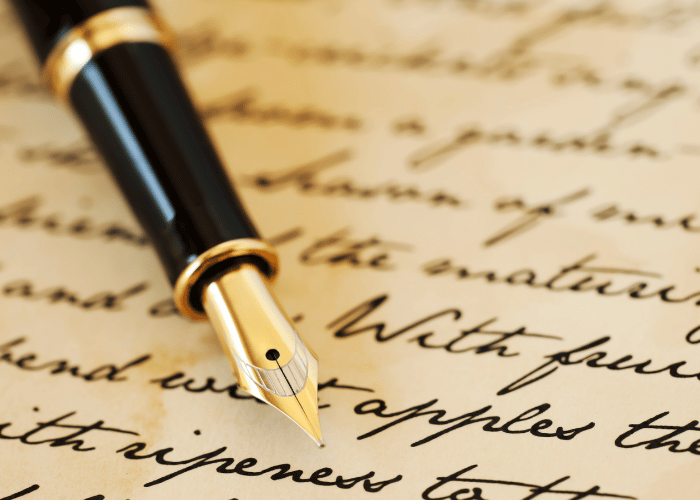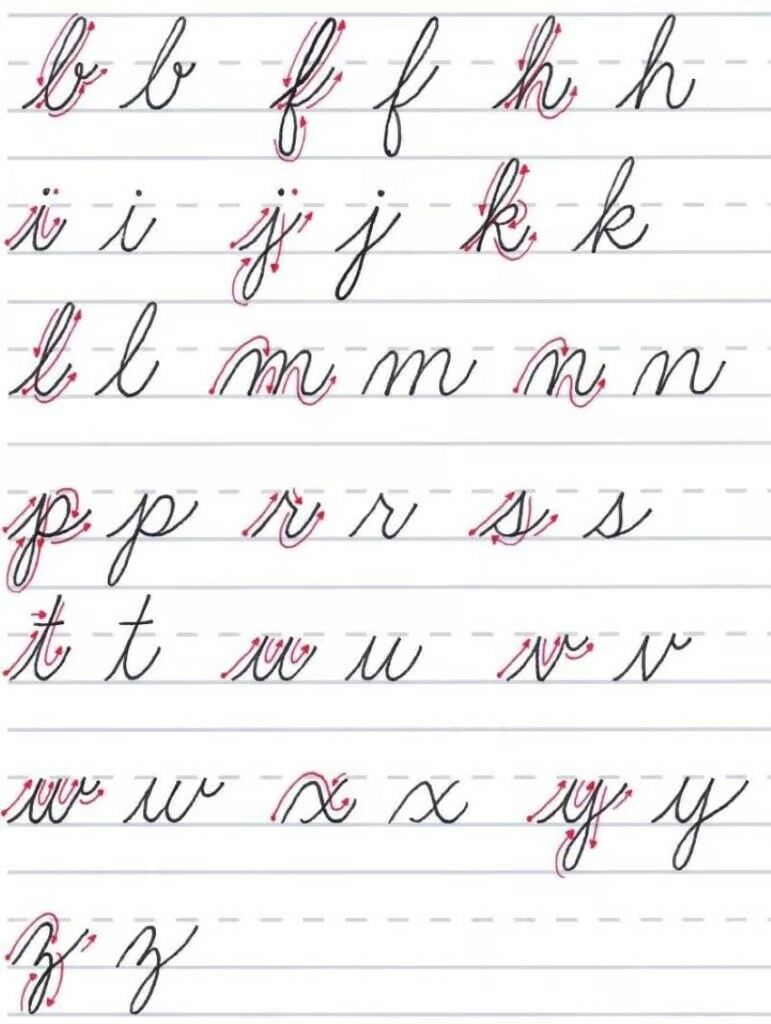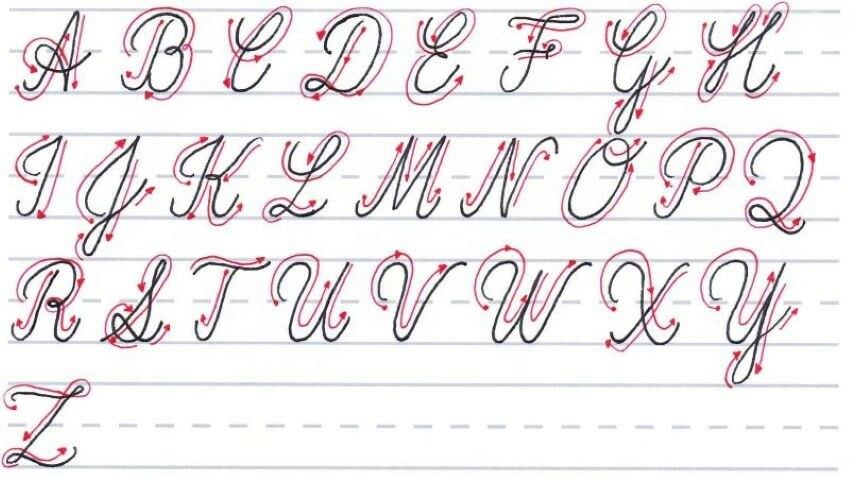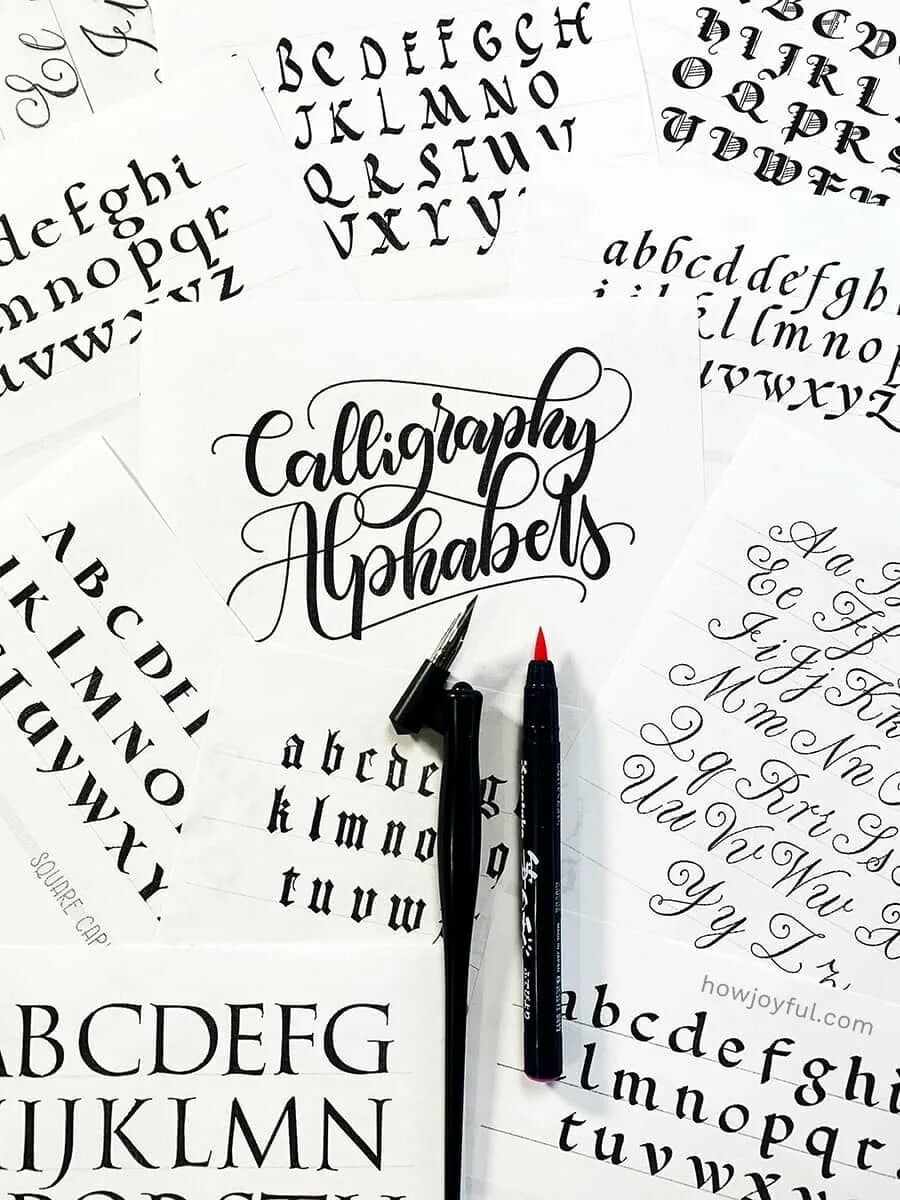
Let's enter the world of calligraphy. Have you ever thought about how to write in cursive and make your presentation stylish and more connected to the readers when you just clicked the right place? In this article, we will provide a deep explanation of different tips and techniques to help you learn and master the method of wiring beautiful English cursive writing. Start by learning the basics of writing beautiful flowing writers and and join us in the journey of penmanship and include a personal touch to the writing expressions. Let's dive into the beautiful world of cursive writing
What is cursive writing?
Cursive writing is more than just putting the letters together and is more like a mental exercise. The flowing script helps in providing an organized and smooth way of writing the thoughts in any sentence. As the children trace the curves and loops in the letters of cursive writing, also also the process of writing an essay, it lot more than just writing. It refers to a process that helps create strong connections in the brain. Therefore cursive writing helps in improving memory recalls, improves cognitive ability, and provides simulations for different pathways in the minds of the children.

Why is cursive writing considered to have timeless importance?

As today’s world is dominated by digital typing and communications, learning cursive timeless presentation of writing beautiful phrases in the English language. It is not just tradition, it is more than that. The importance is considered timeless due to various reasons in the changing communication methods and the evolution of technology.
- Connected to the history and culture of the people
Writing in cursive carries a historical connection as a large number of documents and manuscripts in the past were handwritten. By learning the art of cursive writing people can appreciate the rich culture and heritage of written communication.
- Personal expression
The skill helps the individual to express their ideas in their unique ways. The handwriting of every person is different adding individuality to written communication which is not present in typed text.
- Cognitive benefits
For the students having the ability of cursive writing is more than just having the skills, it is also a cognitive exercise. The connection between the hand and brain is considered to help improve motor skills memory, and brain development in the students.
- Aesthetic and artistic value
Cursive writing is considered as an art form. The connected and flowing letters create an aesthetically beautiful script, in any 3 paragraph essay or any type of document. The element of art helps prove the timeless appeal of calligraphy writing.
- Relation to signature and formal documents
Generally, students learn to write in cursive when dealing with formal documents, signatures, and formal correspondence. Mastering and understanding cursive helps improve the confidence of the students in participating and navigating different legalities and formalities.
- Therapeutic value
For many students engaging in cursive writing can be therapeutic. The continuous and rhythmic nature of cursive writing, can provide calmness, and provide a mediating and mindful experience for the candidates. This shills palsy an important role in improving the mental conditions of the people suffering from dyslexia. Also, the continuous flow of letters assists in reducing cognitive and visual interruptions and provides a more comfortable for those facing difficulty in traditional letter writing.
Other than the timeless importance of calligraphy writing, one more important ability lies in the ability to bridge the past and present, providing a unique way of expressing personal experience and improving cognitive abilities. Highlights artistic values, maintains relevance in legal contexts, and also acts as a therapeutic practice.
Benefits of learning cursive writing
Cursive writing is a specialized expression, that helps to add elegance and beauty to the text of the writer and ensures a deeper appreciation of history. Today when typing is preferred, the unique abilities of calligraphy especially for the young generations remain very important. Some of the reasons that make learning cursive writing important are
- Improved skill and quality
After mastering the fundamentals of print handwriting, cursive writing becomes important, resulting in better articulation of thoughts. This expertise helps in creating legible and coherent content and thereby optimizing cognitive resources.
- Amplifies creative thinking
Calligraphy excites the creative and logical sides of the brain, resulting in fostering holistic mental exercise. The dual involvement of the brain helps in increasing the linguistic skills and memory of the children. This helps in stimulating innovative ideas and making more creative brains in the children.
- Improves memory
The uniqueness of handwritten letters helps in creative distinct advantages in the retention of memory. The use of interconnected letters helps in creating a memory pattern resulting in better recall. As children practice cursive writing from the start of their studies, it can help in retaining and remember the vocabulary and information they face.
- Increased cognitive growth
Calligraphy writing is not just limited to writing neatly, it actively improves the developing thinking abilities.
- Improved reading comprehensive
Practicing handwriting helps in improving reading comprehension abilities as it enables deeper relations with the written text.
- Development of patience and focus
Mastering the ability to write cursive requires focus and patience, and makes the children learn the importance of trust and patience in their educational journey. Additionally, the development of these qualities is very beneficial for writing any dissertation and research paper.
Therefore calligraphy extends beyond aesthetics, it is an essential tool for expressing thoughts, and improves creative engagement and memory. All these make cursive writing an important skill for young children.
Steps for writing cursive
Now let's move to by step-by-step process of gaining the skills required to write in cursive. The following steps will help in writing in cursive very easily for the children. So let's just start with the writing process and explore the artistry involved behind every curve and stroke in cursive writing.
- Step 1: Understanding the basics
Firstly it is important to get familiar with the alphabets of cursive writing. Note the shapes and the connection between them. It is important to the basic strokes such as the upstrokes, downstrokes, and loops.
- Step 2: Practicing lowercase letters

It is important to start by practicing the lowercase letters at first. It is important to master the individual forms of every letter. Focus on practicing consistency slant and ensure proper connections between the alphabet. This is an important stage due to the increasing legibility of cursive writing in different academic contexts including formatting and italicized style in research papers.
- Step 3: Next practice Uppercase letters

After mastering the lowercase letters, it is important to progress to uppercase letters, it is important to practice uppercase letters. Focus on the unique characteristics of every letter and the connections between the uppercase letters and lowercase letters.
- Step 4: Practice letter combinations
Practice letter combinations to form different common letters and words helps in smooth transitions between words and improves the legibility of the texts.
- Step 5: Development of continuous slant
Cursive writing includes slant to be right. Therefore it is important to maintain a consistent slant in the words to help improve the readability and aesthetics of the script.
- Step 6: Consistent space
In cursive writing, it is important to focus on maintaining consistent space between letters. Proper spacing plays an important role in improving the readability of the text. It is also important to focus on word connections and reduce overcrowding and spacing issues as it helps in improving the overall clarity of the papers.
- Step 7: Practice on connection of letters
The beauty of cursive letters lies in the connection between the alphabet. Therefore practicing of joining letters that look naturally joined and seem a continuous flow is very important. It is advised not to lift the pen too frequently.
- Step 8: Exploring new writing styles

It is important to experiment with different working fonts to identify the font that suits you the most. Some of the popular fonts are Allura, Caballero, Citadel Script, Lavender Script, Hummingbird, Belinda, and more. Some of these fonts may have variations in connections, therefore it becomes important to explore new fonts to identify which style is more comfortable to write. It is important to consider the different styles of personal expression, similar to the style and tone decisions made in a formula paper or opinion essay.
- Step 9: Improving writing speed
As you start becoming comfortable with the techniques. It is important to focus on improving the speed of writing. The goal is to maintain a balance between speed, elegance, and legibility of the paper.
- Step 10: Regular practice
Practice is the key to success in calligraphy similar to any other skill. It's important to provide proper time each day to practice cursive handwriting. The more the practice, the more the accuracy and confidence in the students. Whether making use of cursive writing as in formal practice or writing stylistically for informal or personal pacers, regular practice is very important.
It is important to remember that cursive writing is also and gradual process and therefore it is very important to keep patience and enjoy while you improve your writing skills.
Tips for beautiful cursive writing
Learning cursive handwriting is a cool and outgoing adventure. However, some important things should remembered when practicing cursive writing. Some of the most important tips that will help in making the calligraphy journey easy are
- Download papers with cursive alphabets and practice replicating them or tracing them systematically.
- Starting your cursive writing journey by first practicing the lowercase alphabet.
- After practicing the lowercase alphabets it is advisable to move to uppercase alphabets
- Make use of specific font to maintain consistency in the cursive style.
- Practice at least a minute daily to improve cursive writing skills.
- Start your journey with simple words such as “u” or “o” before trying complex letters.
- Focus on writing beautifully and avoid rushing and overdoing.
- Don't make use of too much pressure when writing. Generally, beginners apply too much pressure when practicing cursive writing. It is important to maintain a light touch on the paper when making cursive stencils.
- It is important to practice fluid movement exercises to improve cursive writing skills.
- Handwriting I considered very important in increasing the personal touch in the paper especially when writing about yourself, making the text more intimate when compared to written words.
- Making use of lines of paper can be very helpful for improving the structure of the letters when practicing cursive letters.
- Pain paper can also be used for printing line paper templates in place of line paper.
- Keep the practice papers in a binder or file to track your progress and resources more effectively.
Conclusion
Learning to write cursive is a rewarding journey as it helps in improving penmanship and also improves the overall skills of the students. The tips and steps provided in this paper will act as a roadmap for creating elegant connecting letters. However, it is also important to note that the ley lies in continuous practice and a mindful approach to each stroke made in the letter. Also as we are discussing cursive writing, it is important to appreciate the timeliness and charm it brings and the personal touch it provides to the written expressions. Therefore just pick up your pen, hold the flow, and transform your handwriting with a unique script with helpful recommendations from our experts.


